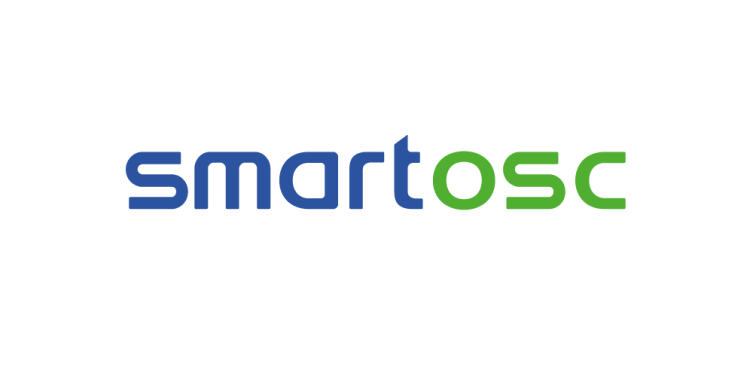As the world faces mounting environmental challenges, industries are increasingly recognizing the necessity of integrating sustainability and eco-conscious practices into every aspect of their operations. In Australia, environmentally sustainable work practices have been acknowledged for several decades. For instance, the minerals industry introduced its first Code of Environmental Practice in 1997, showcasing its dedication to responsible and sustainable mining practices.
Sustainable work practices extend beyond merely reducing carbon emissions and adopting renewable energy solutions. They also encompass the use of environmentally friendly safety equipment. This blog explores the definition of environmentally sustainable work practices in Australia and how to adopt them.
What is Environmentally Sustainable Work?
An environmentally sustainable work is characterized by a commitment to greener business practices, an energy-efficient office, and an actionable pledge toward waste reduction. An environmentally conscious organization is dedicated to achieving its business goals and maintaining operations without negatively impacting the world around them.
To determine your company’s impact, you can use the environmental, social, and corporate governance (ESG) framework. ESG helps measure organizational sustainability through environmental, social, and governance factors. This framework includes:
- Measuring Carbon Emissions: Assessing and reducing the company’s carbon footprint.
- Reevaluating DEI Policies: Ensuring diversity, equity, and inclusion in the workplace.
- Evaluating Business Partners: Choosing partners who align with sustainable and ethical standards.
Implementing these environmentally sustainable work practices can significantly enhance workplace wellness for employees and help identify areas for growth to maintain a greener workplace in the future. For example, an employee in a green office might segregate waste into appropriate bins, reinforcing the organization’s commitment to sustainability.
Top Simple Ways To Adopt Environmentally Sustainable Work Practices In Australia
Incentivize Green Commuting
Transportation is a major contributor to greenhouse gas emissions. In 2022, the transport sector accounted for 19% of Australia’s emissions. With more employees switching to remote work, this number may have dropped slightly over the past 18 months, but there is still much more we can do to limit carbon emissions from transportation.
Many companies facilitate carpooling or subsidize the use of public transportation by offering pretax benefits to their employees. These measures not only benefit the environment but also foster a stronger sense of community among employees who carpool, and they provide opportunities for workers to remain productive while commuting.
Employers can also encourage staff to bike or walk to work by offering incentives such as raffle prizes or other rewards for those who do so regularly. Providing bike racks or secure storage areas during the day sends a clear message that the company supports employees who choose pedal power over fossil-fueled transportation. These measures are integral to promoting environmentally sustainable work practices within the organization.
Reduce building energy usage
Heating, cooling, and electricity can account for up to 75% of a city’s carbon footprint, with much of that energy wasted in older buildings that lack energy-efficient materials. Drafty windows, poor insulation, outdated HVAC systems, and old lighting technology make these buildings costly to operate. In Australian homes, depending on the climate zone, heating and cooling can account for 20% to 50% of energy use.
To reduce energy usage, consider engaging outside experts for an energy audit. Local utility companies or government agencies often offer programs to identify potential savings and recommend improvements. These audits are environmentally sustainable work practices that are frequently available at little or no cost, and energy efficiency improvements may be subsidized. These upgrades can pay for themselves within two to three years.
Steps to conducting an energy audit:
- Engage with a certified energy auditor or a reputable company that offers energy audit services.
- Discuss the specific needs and goals for your building, including any known issues or areas of concern.
- The auditor will conduct a thorough on-site inspection of the building, examining the building envelope, HVAC systems, lighting, and appliances. They may use tools such as infrared cameras to detect air leaks and insulation deficiencies, and blower doors to measure the building’s airtightness.
- Based on the findings, the auditor will provide a detailed report with recommendations for improvements.
- We can then choose which recommendations to implement, often starting with the most cost-effective measures.
- Ongoing monitoring and maintenance are essential to sustain energy savings over time.
Reduce, Reuse, and Recycle
One of the simplest ways to apply environmentally sustainable work practices and make your office more environmentally friendly is by implementing recycling programs. The familiar mantra “reduce, reuse, recycle” offers a straightforward approach:
- Reduce: The first and most effective step is to minimize resource consumption. Evaluate your office practices and identify areas where usage can be cut down.
- Reuse: Look for opportunities to repurpose items that might otherwise be discarded. Encourage employees to use reusable cups and mugs instead of disposable ones.
- Recycle: Place recycling bins in visible, convenient locations to encourage proper disposal of recyclable materials. This helps increase recycling rates and reduces landfill waste.
For companies involved in manufacturing or frequent material handling, it’s beneficial to assess existing business processes for ways to incorporate the reduce, reuse, and recycle principles.
Many businesses have adopted reusable pallets and packaging materials. Others collect and recycle scrap material from machining operations or find ways to reuse byproducts. For instance, Starbucks allows customers to collect used coffee grounds for composting, which can be used productively in gardens.
SmartOSC: An Ideal Workplace for Environmentally Sustainable Practices
SmartOSC is dedicated to fostering a sustainable and ethical work environment, a commitment recognized by our receipt of the Bronze Medal in 2023 from EcoVadis, a leading global organization in business sustainability ratings. This accolade underscores SmartOSC’s leadership not only in the IT sector, and IT jobs in Vietnam,…but also in promoting sustainable business practices.
SmartOSC has made significant strides in integrating sustainability into its business operations, surpassing average scores in all four categories evaluated by EcoVadis: Environment, Labor & Human Rights, Ethics, and Sustainable Procurement. Here’s how SmartOSC is championing environmental sustainability:
SmartOSC’s journey towards environmentally sustainable work practices is ongoing, driven by a commitment to continuous improvement and innovation. Our efforts in environmental sustainability, ethical conduct, and social responsibility make SmartOSC one of the best companies to work for those passionate about contributing to a greener, more sustainable future.
Conclusion
While fostering environmentally sustainable work practices is an iterative process defined by trial and error, the return on investment for these efforts will be invaluable. Continuous improvement in the mission of greener living will benefit your company, your community, and the world at large. Do not underestimate the impact and power of small, incremental changes toward more sustainable business practices.
Join SmartOSC in our commitment to sustainability and innovation. Explore exciting career opportunities with us and be part of a team dedicated to making a positive impact on the environment and society. Visit the SmartOSC Careers website to learn more and apply today.






